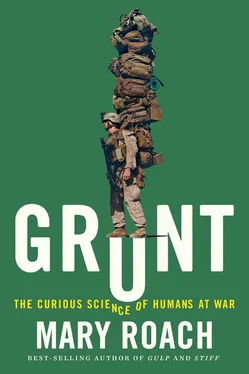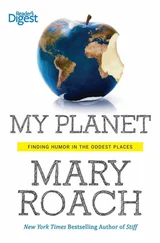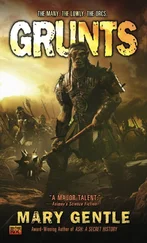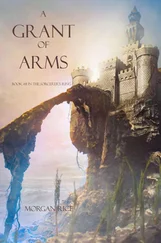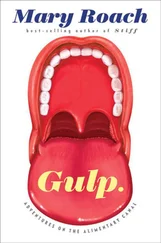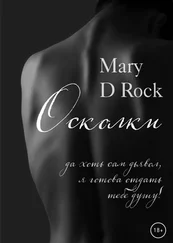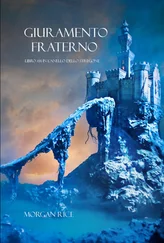THE DEMONSTRATION begins with the farting sound of a squeezable mustard bottle. A line of glistening yellow joins the duns and drab olives of a square of camouflage fabric. The cloth is clipped to a sloping board to foster roll-off. This being a roll-off test. As a cameraman and a small crowd look on, the line of mustard creeps down the cloth, holding its shape perfectly. A young chemical engineer, Natalie Pomerantz, directs onlookers’ attention to the terrain across which the condiment has just traveled. “No residue trail!”
Ketchup follows, then coffee, and milk, as though the owner of the uniform had engaged the enemy in a food fight. Everything rinses clean with water. Natalie invites me to feel the underside of the cloth, and I do. It is completely dry.
Natalie started with the easy ones. Liquids that are mostly water have high surface tension. That means that the molecules prefer to bond more strongly to each other than to most of the things you might spill them on. A liquid with lower surface tension, like alcohol, won’t bead up on a fabric the way water will; it soaks right in. A bead of water is a molecular huddle, a withdrawal inward, a refusal to join hands with strangers. Confronted with air, the surface of water pulls together powerfully enough to form a weak skin. The insect kingdom has water striders, but no gin striders. At the far high end of the surface-tension spectrum is mercury. Mercury beads up and rolls off pretty much any surface you drop it on without leaving a trace. [6] Including the skin of children whose parents, like mine, collected the mercury from broken thermometers and put it in a plastic margarine tub for them to play with. The sixties sure were different.
One of mercury’s qualifications for old-timey thermometerdom—along with staying liquid in extremes of cold and heat—is that it doesn’t wet the inside of the glass. No residue trail! So you can clearly read the temperature.
Many of the things the military tends to spurt and dribble on itself—motor oil, aviation fuel, hexane—have far lower surface tension than water. Natalie drips motor oil on another square of cloth. She picks up a cup of water and launches the contents like an outraged dinner date. Again, the mess rinses away with no trace remaining. “That was the money shot,” a colleague says.
Natalie is nodding. Beaming, even. “This is like a day out in the sun for us.” She’s joking, but it’s true in a way, in a good way. The delight she takes from science is an effervescence, something sparkly and hard to hold back. We should all love our jobs this much.
The super-repellent coating takes its inspiration from the leaves of the water lily. The surface of a lily pad, viewed under an electron microscope, is a carpet of tiny nubs, each covered with yet-smaller nano-nubs of waxlike crystals. (Paraffin wax is itself an effective fabric waterproofer, but it’s too flammable for the military to use.) The tiny nubs and peaks reduce the contact and interaction between the cloth and whatever liquid spills on it. The coating also makes the surface more energetically stable, further discouraging interactions between the textile and the glop.
Though the publicity for this “super-shedding” coating has focused on its grime-shunning properties—“self-cleaning underwear” is how Accetta reeled me in—the more important application is protection from chemical and biological weapons. The first garments to feature the new technology will be an outer shell and pants: a chem/bio suit. Garments like this include a layer of activated carbon (also known as activated charcoal) to bind up noxious organic materials. The super-repellency means this layer can be thinner; if 95 percent of what hits a garment rolls right off it, that means far fewer activated carbon receptor sites are needed to bind up the poisons. That’s good, because a garment with a thick layer of activated carbon is hot and uncomfortable. It’s like wearing an air filter. With protective clothing, comfort is paramount. If it’s uncomfortable, troops will be tempted to flout safety regulations and stuff it under their seat.
Likewise if they hate how it makes them look. “With protective gear especially, it’s key that you design something that’s kind of sleek and cool, because otherwise they’re not going to want to wear it.” That is a quote from Annette LaFleur, the US Army’s top staff fashion designer and the next line item on “MARY ROACH SCHEDULE as of 1400 hrs 20 September 2013.”
AZIPPER IS a problem for a sniper. Here is a man who may spend an entire afternoon on his belly, sliding around on rubble and earth. If his top closes with a zipper, sand and muck will be ground into the spaces between the teeth, and soon it will jam. A zipper is, furthermore, uncomfortable to lie on. As are buttons. A “hook-and-loop fastener” like Velcro is a less protuberant front-closure option, but it’s noisy. I have heard stories of Special Operations guys whose Velcro put them in danger by revealing their position. A stealthier model is on Natick’s hook-and-loop fastener agenda. [7] Is it possible for an organization to have enough hook-and-loop fastener concerns to merit a whole agenda? When that organization is the US Army, it is. The US Army has enough hook-and-loop fastener concerns to merit an entire Hook and Loop Task Group (a sub-subcommittee of the Combat Clothing Utility Subcommittee).
The designer of the new sniper base suit—Annette LaFleur, as pretty as the name suggests—is showing us how she got around this by making the top a side-closure garment. She indicates a dress form, standing in one of the work bays in Natick’s Design, Pattern, and Prototype Facility. The headless dress form, a staple of the fashion industry, takes on an uncomfortable poignancy when the garment under construction is designed for war. Our sniper looks like someone else’s sniper got him first.
LaFleur takes the fabric between her fingers. “This is a coated Cordura we went to.” The bolts of fabric may be olive drab and the sewing machines built for Kevlar, but this is still a design studio, and LaFleur’s language reflects this. (She described flame-resistant uniforms as one of the “things that are hot right now.”) However, LaFleur didn’t go to Cordura because it’s in style. She chose it because it’s durable and flame-resistant, and because the coated backing keeps moisture from seeping through. And that’s important if you’re lying someplace damp waiting to kill someone. Even the sleek, uncluttered lines of the sniper top are functional, a result of the side closure and of an earlier decision to move the pockets from the front to the sleeves for easier access. (The ensemble will stop looking sleek should elements of the accessory kit be added. Snipers can customize the back, pants, and helmet by tying in, say, jute strands to blend in with brush or grassy terrain. LaFleur, but probably not many snipers, compares this to macramé.)
LaFleur points to a cloth flap called a button placket, which covers the buttons so they don’t get chipped. She needn’t have worried. US military specifications for buttons include a minimum compressive strength, tested by placing the item between flat blocks of steel and bearing down until “the first audible sound of cracking.” Federal button inspectors display a medieval zeal for their work. Other inspection methods include pressing a hot iron to the button’s back, boiling it in water, and pulling the shank until it separates from the body.
US government button specifications run to twenty-two pages. This fact on its own yields a sense of what it is like to design garments for the Army. Although the Army requires its clothing designers to have a fashion design degree, fashion—in the sense of individuality expressed through appearance—is the opposite of an Army requirement. It’s a violation of policy. US Army Appearance and Grooming Policies prohibit anything to which the adjectives “extreme, eccentric or faddish” might apply. The United States Army does not abide: unbalanced or lopsided hairstyles, “barrettes with butterflies,” “large, lacy scrunchies,” teased hair that rises more than 3½ inches from the scalp, hair that is dyed green, purple, blue, or “bright (fire-engine) red,” Mohawks, dreadlocks, slanted or curved parts, flared sideburns, tapered sideburns, individual sideburn hairs that exceed 1/8 of an inch when fully extended, goatees, beards of any kind, Fu Manchus, and mustaches that cover any part of the upper lip or “extend sideways beyond a vertical line drawn upward from the corners of the mouth.” [8] Defense Department facial hair policy is so complex that the Army saw fit to create visual aids for identifying Unauthorized Male Mustaches and Unauthorized Male Sideburns. Grids are overlaid on drawings of faces with labeled letter points, A, B, C, D. No such aid or information is provided for unauthorized female or transgender facial hair, and I encourage all such enlistees to begin growing their Fu Manchus and muttonchops now.
Читать дальше
